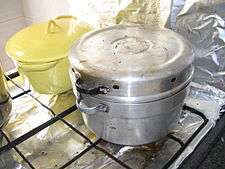Austerity in Israel
From 1949 to 1959, the state of Israel was, to a varying extent, under a regime of austerity (Hebrew: צנע, Tzena'), during which rationing and similar measures were enforced.

Rationale
Soon after establishment in 1948, the emerging state of Israel found itself lacking in both food and foreign currency. In just three and a half years, the Jewish population of Israel had doubled, increased by nearly 700,000 immigrants. Consequently, the Israeli government instigated measures to control and oversee distribution of necessary resources to ensure equal and ample rations for all Israeli citizens.
In addition to the problems with the provision of food, national austerity was also required because the state was lacking in foreign currency reserves. Export revenues covered less than a third of the cost of imports, and less than half of the consequent deficit was covered by the Jewish loan system known as Magbiyot (Hebrew: מגביות, lit. Collections). Most financing was obtained from foreign banks and gas companies, which, as 1951 drew to an end, refused to expand the available credit. In order to supervise austerity, the prime minister, David Ben-Gurion, ordered the establishment of the Ministry of Rationing and Supply (Hebrew: משרד הקיצוב והאספקה, Misrad HaKitzuv VeHaAspaka), headed by Dov Yosef.
Life under austerity

At first this rationing was set for staple foods alone — oil, sugar and margarine, for instance — but it was later expanded to furniture and footwear. Each month, each citizen would get food coupons worth 6 Israeli pounds, and each family was allotted a given amount of foodstuffs. The diet chosen, fashioned after that used in the United Kingdom during World War II, allowed a meager 1,600 calories a day for Israeli citizens, with additional calories for children, the elderly, and pregnant women.
The enforcement of austerity required the establishment of a bureaucracy of quite some proportions, which nonetheless proved ineffective in preventing the emergence of a black market in which rationed products — often smuggled from the countryside — were sold at higher prices. To counter this, the government established in September 1950 the Office for Fighting the Black Market (Hebrew: מטה למלחמה בשוק השחור, Mate LeMilhama BaShuk HaShahor), whose goal it was to combat the forming of such a market. Yet despite the increased supervision, and the specially summoned courts, all such attempts at suppression proved ineffective.
1953 improvements
In 1952 the reparations agreement was signed with Germany, compensating the Jewish state for confiscation of Jewish property during the Holocaust. The resulting influx of foreign capital was a huge boost to the state's struggling economy, and led to the cancellation of most restrictions in 1953. In 1958 the list of rationed goods was narrowed to just eleven goods, and in 1959 rationing of all goods except jam, sugar and coffee, was abolished altogether.
Results
Economically, austerity proved a failure, mostly due to the enormous government deficit, covered by bank loans, creating an increase in the amount of money use. Throughout austerity unemployment remained high, and inflation grew as of 1951. Yet austerity did have its advantages – living standards were preserved at tolerable levels, while the resources saved were made available to feed and clothe and shelter the entire population adequately, while at the same time integrating and successfully resettling over 700,000 Jewish refugees from European, Arab, and Muslim lands.
See also
- Rationing in the United Kingdom - 20th century wartime periods
- Special Period - austerity in Cuba 1991-1999